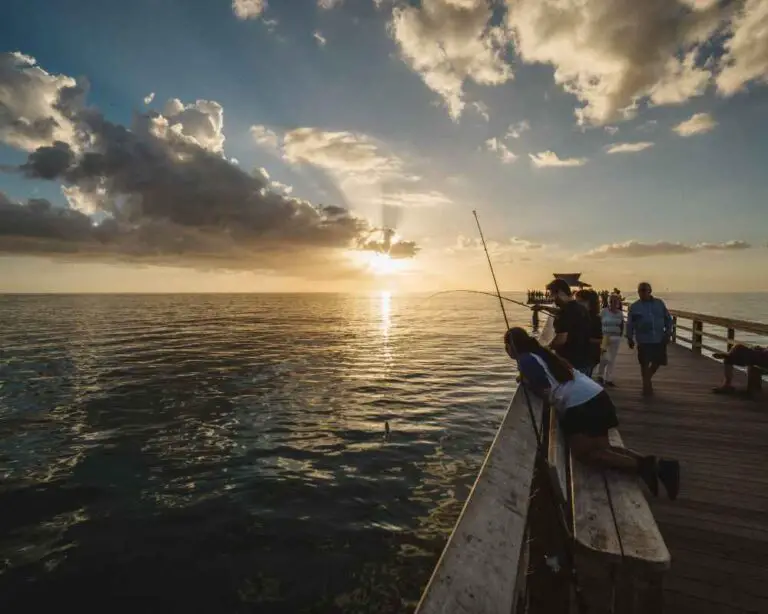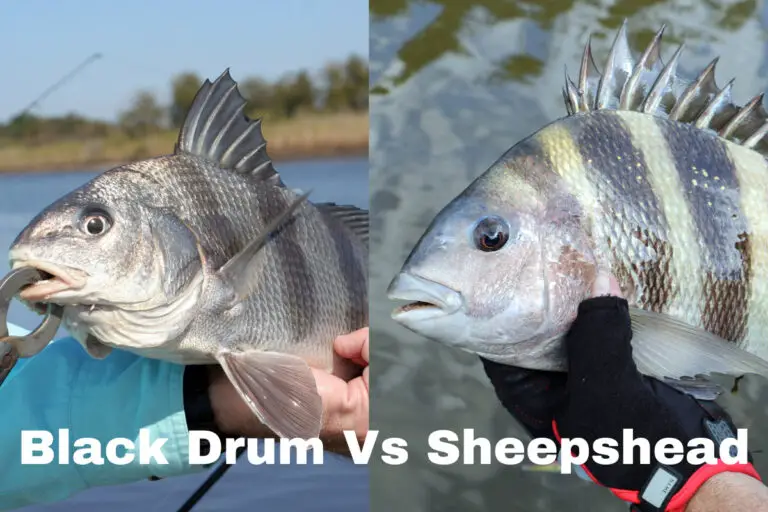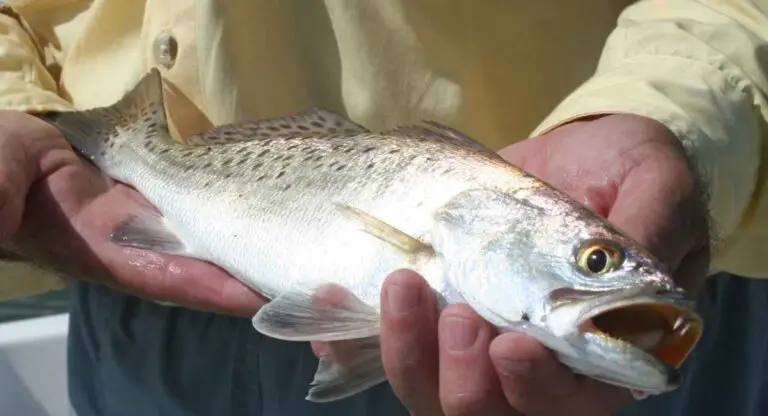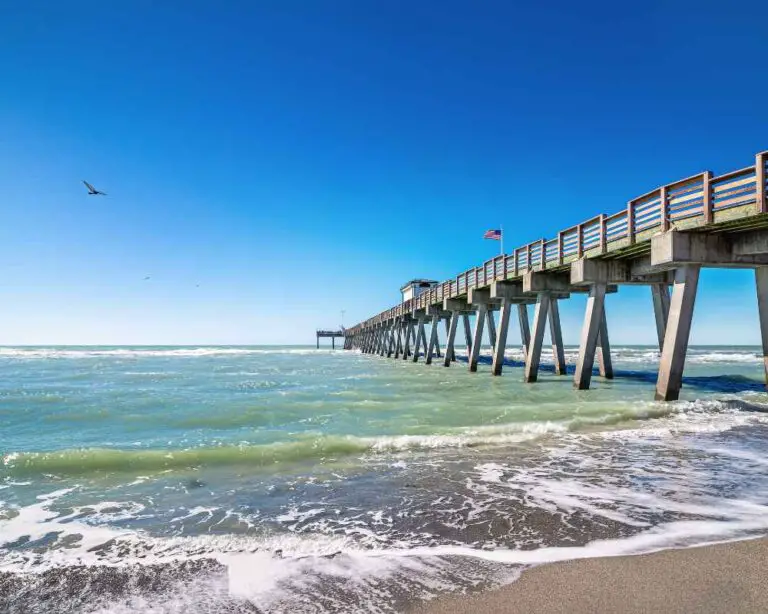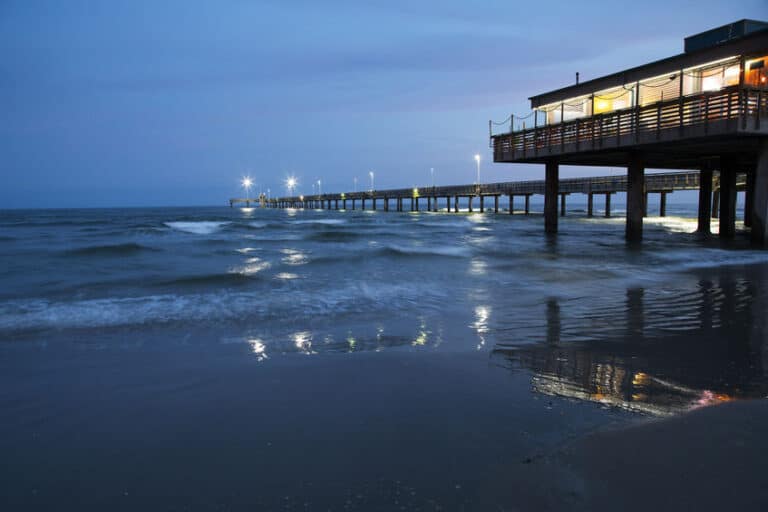How to Fish from a Pier: Tips and Tricks for Catching Big Fishes!
Fishing from a pier has always been a favorite pastime of mine, allowing me to connect with nature and fellow anglers in a relaxed and accessible setting. Whether in saltwater or freshwater, this activity offers a wonderful opportunity for both experienced fishermen and beginners to enjoy the great outdoors. Throughout my countless hours spent on various piers, I’ve gathered valuable insights and techniques that I’m excited to share with fellow fishing enthusiasts like you.
One of the major advantages of pier fishing is the ability to access deeper water and encounter a diverse range of fish species that may be harder to reach from the shore. Piers often serve as a sanctuary for fish, providing ample food sources and shelter. Through trial and error, I’ve learned that having the right gear and understanding key techniques can significantly improve your chances of success during your fishing trips.
In this article, I’ll be revealing some of my most trusted pier fishing tips, covering everything from selecting the appropriate equipment to comprehending fish behavior around piers. With a bit of practice and a touch of patience, you’ll be able to maximize your time on the pier and increase your opportunities for reeling in some remarkable catches.
Choosing the Right Pier
Location
When it comes to selecting a fishing pier, location is my top priority. I prefer piers that are conveniently close to my area, saving me time and energy. States like Florida, Texas, California, and Louisiana offer an abundance of options due to their expansive coastlines.
In my search, I seek out piers located in areas with active tides and underwater structures. These factors tend to attract a diverse range of fish species. For example, drop-offs and rocky formations often serve as hiding or feeding spots for fish. Additionally, observing seagulls can provide valuable insights into prime fishing areas, as these birds tend to gather where fish are actively seeking their next meal.
Regulations
I make sure to familiarize myself with the local fishing regulations first. It’s important to know if a fishing license is required and if there are any specific rules regarding the types of fish that can be caught or kept. Let’s take a quick look at the fishing license requirements in the mentioned states:
- Florida: Anglers are required to follow the Florida fish limits and purchase a Florida saltwater fishing license
- Texas: Both residents and non-residents need a license to fish in Texas saltwater
- California: Saltwater fishing requires a license for residents and non-residents aged 16 or older
- Louisiana: Anglers aged 16-59 need a basic fishing license for Louisiana saltwater fishing
Public Piers
When it comes to fishing, I’ve discovered that public piers can offer incredible opportunities. These piers are conveniently located and typically well-maintained, making them fantastic spots to cast a line. I’ve had some of my most memorable fishing trips on public piers in various states. Speaking of which, let me share with you some popular public piers worth checking out:
- Santa Monica Pier, California: This iconic pier not only offers stunning ocean views but also provides excellent fishing opportunities. Anglers can target a variety of species, including surfperch, mackerel, and even the occasional halibut.
- Jacksonville Beach Pier, Florida: Situated along the picturesque Jacksonville Beach, this pier is a favorite among anglers. It offers access to a range of fish species such as redfish, flounder, Spanish mackerel, and sheepshead.
- Galveston Fishing Pier, Texas: Located on Galveston Island, this pier is a hotspot for both locals and visitors. It’s an excellent spot for catching fish like speckled trout, redfish, and drum, while also enjoying panoramic views of the Gulf of Mexico.
These public piers not only provide great fishing opportunities but also create a vibrant atmosphere where anglers can connect and share their passion. So, if you’re looking for an enjoyable and accessible fishing experience, consider heading to one of these popular public piers.
Equipment and Gear
Fishing Rods
When I go pier fishing, I find that using a 7-9 foot medium action fishing rod works best. This length provides a good balance of casting distance and control. Saltwater fishing often involves targeting species like redfish and croaker, so a sturdy rod is essential.
Reels
For reels, I prefer using a spinner reel because they’re versatile and easy to use. Make sure to pick a saltwater-rated reel to prevent corrosion from the saltwater and air. My go-to reel size for pier fishing is around 4000-6000 range.
Lines
When it comes to fishing lines, I have a couple of recommendations. For the mainline, a 20-30 lb braided line is excellent as it provides greater sensitivity and casting distance. As for the leader material and fluorocarbon line, I like using 20-30 lb test with around 18-24 inches in length. Fluorocarbon leader has lower visibility underwater and good abrasion resistance, which is perfect for pier fishing.
Terminal Tackle
Now, let’s talk about terminal tackle. When I’m pier fishing, I typically bring the following items:
- Weights/sinkers: A variety of sizes ranging from 1/4 ounce to 2 ounces accommodates changing tides and fish preferences.
- Hooks: I prefer using circle hooks of size 1/0 to 4/0 as they reduce the chances of gut-hooking fish.
- Swivels: These help reduce line twist and make it easier to change rigs.
Bonus tip: Always keep a pair of scissors or a knife handy for cutting bait and line.
Fishing Cart
I never forget to bring my trusty fishing cart. This wheeled cart is a game-changer, making it a breeze to transport all my fishing gear to the pier. With convenient rod holders, tool racks, and an adjustable handle, it keeps everything organized and within easy reach.
Having a fishing cart saves me from lugging around heavy tackle boxes, buckets, and rods. I can effortlessly roll it along, ensuring that I have all the essential equipment at hand for a successful fishing trip. Whether I’m casting from the pier or setting up in a prime spot, my fishing cart keeps everything within reach, making the whole experience more enjoyable.
Not only does my fishing cart make transportation effortless, but it also helps me stay organized. With designated spaces for each piece of gear, I can quickly locate what I need when I need it. No more digging through a tangled mess of fishing lines or searching for misplaced tools. My fishing cart ensures that everything is in its place, ready for action.
Bucket
When heading out to the water for a pier fishing trip, having a reliable and sturdy bucket is crucial. It serves multiple purposes. It allows me to transport live or cut bait, such as sardines or anchovies, and also serves as a convenient container for storing the fish I catch throughout the day.
This versatile piece of equipment is a must-have for any angler, providing practicality and convenience during my fishing adventures.
Picnic Chair
I always make sure to bring along is a comfy picnic chair. Pier fishing can involve patiently waiting for that perfect bite, and having a folding chair to relax in while keeping an eye on multiple rods is absolutely crucial.
Not only does it provide a comfortable spot for a break, but it also allows me to soak in the beautiful surroundings, observe the birds, and fully immerse myself in the serene atmosphere of the pier.
Bait and Lures
Live Bait
On my fishing trips, I’ve discovered that using live bait is often the key to attracting a diverse range of fish species. When I hit the water, I bring along a variety of live baits that have proven to be effective in pier fishing. These include:
- Baitfish: These can be small fish like mullet, sardines, or anchovies. They attract larger predators and can be caught using a lighter rod, perfect for getting the attention of bigger fish down the line.
- Shrimp: A versatile choice, shrimp often attracts everything from small to big fish. I like to use small, live shrimp and rigged them on a hook to imitate their natural behavior underwater.
- Squid: Many fish love feeding on squid, and it’s quite a good choice when targeting larger species. I either use whole small squid or chunks.
Artificial Bait
When the tide is lower and the currents are calmer, artificial lures are my go-to choice since live bait isn’t always available. With a wide range of options, I select specific types based on the fish I’m aiming for, maximizing my chances of a successful catch.
- Bloodworms: These imitations can be a great pier fishing bait since the real thing is a favorite for many fish. Rigging these onto a hook and allowing them to slowly drift in the current can make for an enticing meal for fish.
- Scented lures: Using artificial lures with added scent can help to increase their effectiveness, making it easier to convince fish to bite. Numerous types are available, so it’s essential to find a scent that works well in the saltwater environment of pier fishing.
- Other artificial bait options: There is a multitude of other artificial baits to choose from when pier fishing, such as spoons, jigs, and crankbaits. I like to experiment with various lures depending on the species I’m targeting, the current conditions, and the local ecosystem.
Remember, the key to successful pier fishing is to be versatile and experiment with both live and artificial bait, as the fish’s preferences can change based on factors like weather, season, and location.
Pier Fishing Techniques
I’ve discovered that pier fishing offers a delightful and fulfilling experience for anglers of all skill levels. In this section, I’ll share valuable techniques and tips to enhance your time at the pier and make your fishing adventures even more enjoyable.
Rigs
When it comes to pier fishing, selecting the perfect rig is crucial for success. Factors like target species, bait, and pier structure influence the rig choice. Check out these effective pier fishing rigs I’ve found success with:
- High Low Rig: This versatile rig allows you to present two baits at different depths, increasing your chances of attracting fish. Attach a sinker to the bottom and two hooks above it, each on a short leader. It’s great for targeting a variety of species, from bottom dwellers like flounder to mid-column feeders like mackerel.
- Fish-Finder Rig: This simple yet effective rig is perfect for live or cut bait, as it provides the bait with the freedom to move naturally in the water. Attach a sliding sinker to the mainline, followed by a swivel, a leader, and a single hook. This rig works well for larger game fish such as striped bass and redfish.
Baits
In pier fishing, using the right bait can make a huge difference in your success. Here are my personal favorite baits to use when fishing from a pier:
- Live Bait: There’s nothing more enticing to a hungry fish than a live, wiggling morsel on the end of your line. Some popular live baits for pier fishing include shrimp, minnows, and small baitfish. Hook them through the nose or just behind the dorsal fin to keep them lively.
- Cut Bait: For some species, the scent of fresh, cut bait is hard to resist. Try using chunks of mackerel, squid or other oily fish to attract bottom feeders such as flounder or sea trout. Be sure to use a strong, sharp hook to secure the bait properly.
- Artificial Lures: Sometimes, artificial lures can outperform natural baits, especially when it comes to attracting more aggressive or curious fish. I like using plugs, jigs, and spoons in various sizes and colors, depending on the target species and water conditions.
Remember to check local regulations and recommendations for the specific bait that works best for the species you’re targeting in the area you’re fishing.
Timing and Spot Selection
It’s important to consider the best time and location for pier fishing. You’ll have more success when fishing during low light periods like early morning or late afternoon when fish are actively feeding.
Keep an eye out for structures such as pilings or rocks on the pier, as these are likely spots where fish hide. Additionally, pay attention to signs of baitfish activity or birds diving into the water, as they can be indicators of larger game fish nearby.
By being observant and strategic in your approach, you can increase your chances of a successful pier fishing trip.
Best Fishing Times and Conditions
When I go pier fishing, there are a few key factors I like to consider in order to improve my chances of catching fish. Here, I’ll discuss two main elements: Tides and Currents, and Time of Year.
Tides and Currents
Tides, which are the rise and fall of sea levels, influence the movement of baitfish and their predators. During high tides, fish tend to move closer to the shoreline and structures like piers, taking advantage of the increased water levels to access new feeding opportunities. On the other hand, during low tides, fish might concentrate in deeper channels or around submerged structures.
The second factor to consider is the Time of Year. Different seasons bring about changes in water temperature, fish migrations, and feeding habits. For example, during the warmer months, species like redfish, speckled trout, and flounder are more active, while colder months may see the arrival of species like sheepshead and black drum. By understanding the seasonal patterns, I can better plan my trips to target the fish that are more abundant and active during specific times of the year.
- Incoming Tide: As the water rises, fish often come closer to the shore, making it an excellent time for me to be on the pier.
- High Tide: At high tide, fish are usually right up against the structure, which can provide good opportunities for catching fish.
- Outgoing Tide: As the water recedes, fish move back towards deeper waters, but this can still be a productive time to fish, as they follow the receding current.
By paying attention to the tides and currents I can significantly increase my chances of having a productive and enjoyable pier fishing experience. These factors are just a starting point, as each location and situation may present its own unique considerations. So, the more I learn and adapt to these conditions, the more successful and rewarding my pier fishing trips become.
Time of Year
Another factor I consider when fishing from a pier is the time of year. Different fish species have different migratory patterns and are more active during specific periods. Here’s a general guideline of the best fishing times by season:
- Spring: Fish start to become more active, especially during early morning and late afternoon. This is due to warmer water, which encourages fish to feed closer to the shore.
- Summer: During the summer, fish may become sluggish in shallow waters because of high temperatures. I prefer to fish early in the morning and around dusk when the temperature is cooler, and fish are more active.
- Fall: As temperatures begin to drop, fish start feeding more aggressively in preparation for winter. Early morning and late afternoon remain great times to fish.
- Winter: Fishing in winter can be more challenging because fish are less active in the colder water. However, I still find success fishing during midday when the water temperature is slightly warmer.
So, when fish are more active due to tides, currents, and season, my chances of success while pier fishing increase. Keeping these factors in mind while planning my pier fishing trips allows me to make the most out of my time and possibly land some great catches.
Fishing License and Regulations
Fishing License
When it comes to pier fishing, it’s important to know the fishing license requirements. In some states, like California, you’re not required to have a fishing license when fishing from a public pier. However, if you’re 16 years or older and fishing off a private pier or any other part of the Californian coast, a fishing license is necessary.
On the other hand, in states like Florida, many piers and bridges along the coast allow fishing without a license, as they are already covered by a license provided by a private company or a public body, such as a city.
Keep in mind that free pier fishing may not include inland waters, such as freshwater lakes, depending on the state. In those cases, a license would be required for freshwater pier fishing. It’s always a good idea to check the specific fishing regulations and license requirements for the state you’re in to ensure you’re fishing within the legal guidelines.
Rules and Regulations
In addition to the fishing license, there are some common rules and regulations that I follow when pier fishing:
- Number of rods: Some piers may limit the number of rods you can use. A common number is two rods. Make sure to check the specific rules for the pier where you’ll be fishing.
- Size of fish: The type and size of fish you’re targeting will dictate the fishing outfit you need. For smaller fish like panfish, a lighter setup works, but for larger species, a medium to medium-heavy outfit is recommended.
Targeting Specific Fish Species
Saltwater Fish
When I’m fishing off a pier, I enjoy targeting a variety of saltwater fish species. Some of my favorites include redfish, striped bass, Spanish mackerel, king mackerel, bluefish, and black drum. I’ve found that moving tides usually bring more fish closer to the pier, making it easier for me to catch them.
For redfish and black drum, I like to use live or cut shrimp as bait on a small hook. For striped bass, Spanish mackerel, and kingfish, I’ve found that using a metal spoon or jig works well. When targeting king mackerel or bluefish, I often choose a live baitfish, such as a mullet or menhaden, rigged on a stinger rig.
Freshwater Fish
Pier fishing in freshwater often has me targeting species like panfish, salmon, and sea trout. For panfish, a lighter setup is sufficient, and I usually use small hooks with live bait, like worms or crickets. When salmon are present, I employ a medium to medium-heavy setup and cast lures, such as spinners or spoons, to mimic baitfish.
For sea trout, I prefer using a live or artificial shrimp bait to attract them to my line. In addition to bait choice, I also pay attention to the location on the pier where I’m fishing. Closer to the shore, I might focus on panfish, while farther out, I go after larger species like salmon and sea trout.
While I try to adjust my tactics depending on the targeted species and their habits, here’s a quick reference table of the mentioned species and their preferred baits:
| Species | Preferred Bait |
|---|---|
| Redfish | Live or cut shrimp |
| Striped Bass | Metal spoon or jig |
| Spanish Mackerel | Metal spoon or jig |
| King Mackerel | Live baitfish |
| Bluefish | Live baitfish |
| Black Drum | Live or cut shrimp |
| Panfish | Worms or crickets |
| Salmon | Spinners or spoons |
| Sea Trout | Live or artificial shrimp |
Keep these tips in mind and you’ll soon find that targeting specific fish species from a pier can be a fun and rewarding experience.
Landing Your Catch
When I’m out fishing from a pier, one of the most crucial moments is successfully bringing my catch onto the pier. Over time, I’ve discovered a few techniques and tips that have helped me master this skill. In this section, I’ll gladly share these valuable insights with you.
To begin, it’s important to have the right kind of net. Personally, I find a landing net, also known as a bridge or drop net, to be indispensable. This net is equipped with a metal ring and a rope, allowing it to be lowered vertically into the water. When I have a fish hooked, I guide it carefully over the net and then lift it gently onto the pier. This straightforward yet effective method works wonders when it comes to landing fish from an elevated position.
Video Resources On Landing And Gaffing Your Fish
Get ready to learn the essential technique of safely gaffing a fish in the informative YouTube video “How to gaff a fish” presented by Salt Strong.
In the exciting YouTube video titled “Fishing Basics: Landing a Fish” by Take Me Fishing, you’ll discover essential techniques and tips for successfully landing your catch and bringing it safely to shore.
Other Pier Fishing Tools You May Need
Here are some other tools and techniques that I find helpful when landing my catch on a pier:
- Polarized sunglasses: These help me see the fish better in the water and make it easier to position my net beneath it.
- Fishing pliers and fillet knife: If I plan to take my catch home, I like to have these tools handy for cleaning and filleting the fish on the spot.
- Fishing net: Some piers have large fishing nets available for anglers to use, but I always bring my own to ensure I’m prepared.
While technique is essential, it’s also crucial to be mindful of the location and timing when trying to land a fish from a pier. Dropping my line in the right spot can significantly impact my success. Positioning my rod over the pier so that it doesn’t snag on the pier wall is essential and is a detail that some beginners might overlook.
Other Resources
- “Common Pier Fishing Mistakes and How to Avoid Them” – Salt Strong
- “Pier Fishing Techniques for Beginners” – Take Me Fishing
Conclusion
In conclusion, fishing from a pier is a wonderful way to connect with nature and fellow anglers while enjoying the great outdoors. By following the tips and tricks shared in this article, you can enhance your pier fishing experience and increase your chances of catching big fishes.
From choosing the right pier and equipment to understanding fish behavior and selecting the best bait, every aspect plays a crucial role in your success. Remember to check fishing regulations and have the necessary licenses, and always practice proper techniques for landing your catch.
So, grab your gear, head to the pier, and enjoy the thrill of pier fishing adventures!



